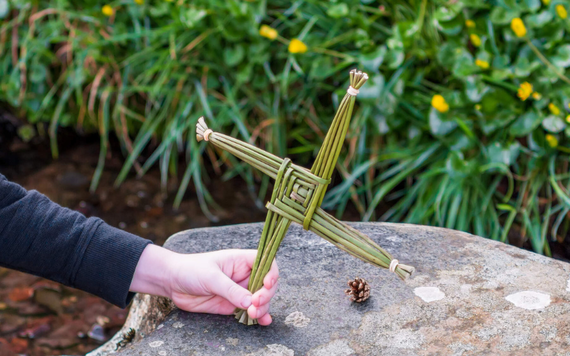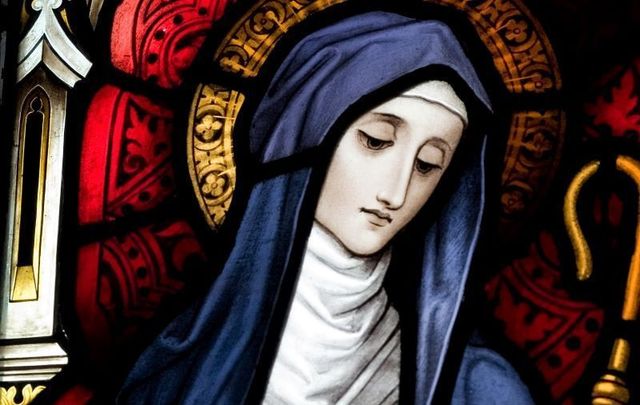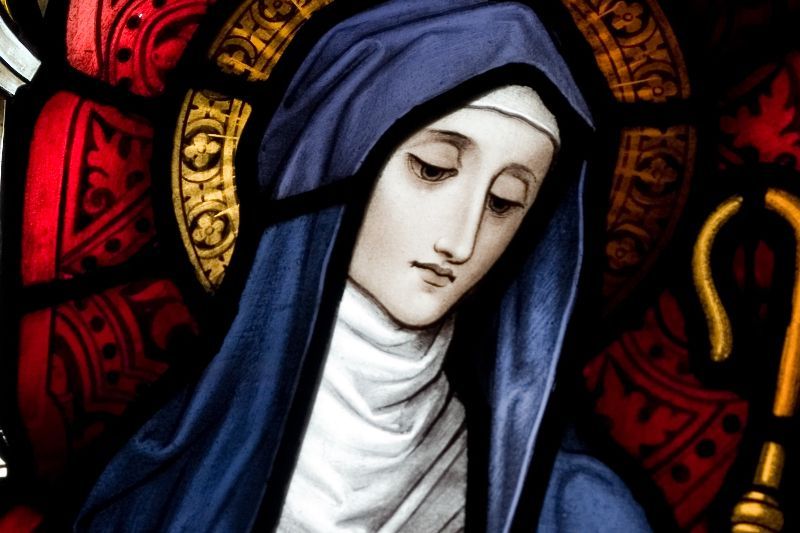St. Brigid's Day, February 1, is when Ireland remembers the Celtic goddess Brigid and her immense power in both the Irish mythological and religious imagination.
The goddess Brigid was the daughter of the Dagda and one of the Tuatha Dé Danann before she was melded with the Christian saint of the same name in the Middle Ages.
In ancient Celtic tradition, the holiday of Imbolc is observed on February 1 or 2 as a day to celebrate Bríd transforming from a cailleach ("witch") into a maiden who collects kindling to make a fire in the winter that will warm the spring and make her young again.
The holiday is understood through the stories of the incredible Brighid. She was the inventor of the mourning songs called caoineadh or "keening." Legend has it that she keens to mourn the death of her son Ruadán and so invents the art form. Brighid's caoineadh is like the Tibetan ritual of ushering souls to nirvana in the Book of the Dead.
The meaning behind St. Brigid's Cross

St. Brigid's Cross. (Ireland's Content Pool)
The Irish tradition of making crosses on Imbolc or Lá Fhéile Bhríde (St. Brigid's Day) is remembered by most Irish people as a Christian ritual.
The spiral of the Brighid cross invokes the North Star and the pattern that the Big Dipper makes in the sky over the course of a year. As the night sky turns around the North Star, the Big Dipper turns through the seasonal year like the hand of a clock.
Brigid is the fire-keeper of that flame of life that mothers tend to so that we don't die in the winter, and so the lines of the family are not broken by the trauma of the cold months. In the winter, Brighid becomes the cailleach, the woman in agedness, and on Imbolc, she collected the kindling of the fires that get her to the spring of regeneration.
Christian interpretation in Ireland makes Brigid into a nun, and children occupy themselves by taking bits of straw and weaving this potential-kindling into the shape of spiraling Brigid's crosses.

Brigid's Holy Well in Co Kildare. (Ireland's Content Pool)
St. Brigid is said to have invented the cross herself while attending a sickbed and picking up rushes from the floor to craft them into a sacred cross.
Taking up the tradition in its many forms focuses the mind in the meditation of craft, and connects our winter minds mad at the cold to the great wheel that turns and is slowly bringing us into the spring of renewal.
The weaving of a St. Brigid's Cross is a special part of Irish culture, last year it was recognised as part of our living cultural heritage.
Is cuid fíor-luachmhar de chultúr na hÉireann é déanamh Chros Bhríde, agus tugadh aitheantas speisialta stáit don chleachtas anuraidh. pic.twitter.com/vhhLiaMv7U
— Tourism-Culture-Arts-Gaeltacht-Sport-Media (@DeptCultureIRL) January 29, 2025
Do you or your family mark St. Brigid's Day? Let us know how you celebrate it in the comment section, below!
* Originally published in 2012. Updated in January 2025.




Comments